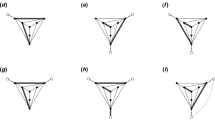Abstract
We study the maximum coverage problem with group budget constraints (MCG). The input consists of a ground set X, a collection \(\psi \) of subsets of X each of which is associated with a combinatorial structure such that for every set \(S_j\in \psi \), a cost \(c(S_j)\) can be calculated based on the combinatorial structure associated with \(S_j\), a partition \(G_1,G_2,\ldots ,G_l\) of \(\psi \), and budgets \(B_1,B_2,\ldots ,B_l\), and B. A solution to the problem consists of a subset H of \(\psi \) such that \(\sum _{S_j\in H} c(S_j) \le B\) and for each \(i \in {1,2,\ldots ,l}\), \(\sum _{S_j \in H\cap G_i}c(S_j)\le B_i\). The objective is to maximize \(|\bigcup _{S_j\in H}S_j|\). In our work we use a new and improved analysis of the greedy algorithm to prove that it is a \((\frac{\alpha }{3+2\alpha })\)-approximation algorithm, where \(\alpha \) is the approximation ratio of a given oracle which takes as an input a subset \(X^{new}\subseteq X\) and a group \(G_i\) and returns a set \(S_j\in G_i\) which approximates the optimal solution for \(\max _{D\in G_i}\frac{|D\cap X^{new}|}{c(D)}\). This analysis that is shown here to be tight for the greedy algorithm, improves by a factor larger than 2 the analysis of the best known approximation algorithm for MCG.
Similar content being viewed by others
References
Ageev A, Sviridenko M (2004) Pipage rounding: a new method of constructing algorithms with proven performance guarantee. J Comb Optim 8:307–328
Chekuri C, Korula N, Pál M (2012) Improved algorithms for orienteering and related problems. ACM Trans Algorithms 8(23):1–27
Chekuri C, Kumar A (2004) Maximum coverage problem with group budget constraints and applications. In: Proceedings of APPROX’04, pp 72–83
Conforti M, Cornujols G (1984) Submodular set functions, matroids and the greedy algorithm: tight worst-case bounds and some generalizations of the Rado-Edmonds theorem. Discrete Appl Math 7:251–274
Feige U (1998) A threshold of ln n for approximating set cover. J ACM 45(4):634–652
Hazan E, Safra S, Schwartz O (2006) On the complexity of approximating k-set packing. Comput Complex 15(1):20–39
Hochbaum DS (ed) (1997) Approximation algorithms for NP-hard problems. PWS Publishing Co., Boston
Khuller S, Moss A, Naor J (1999) The budgeted maximum coverage problem. Inf Process Lett 70:39–45
Megiddo N, Zemel E, Hakimi SL (1983) The maximum coverage location problem. SIAM J Algebraic Discrete Methods 4:253–261
Nemhauser G, Wolsey L (1981) Maximizing submodular set functions: formulations and analysis of algorithms. In: Annals of discrete mathematics (11) studies on graphs and discrete programming, Vol 59. North-Holland Mathematics Studies, pp 279–301
Srinivasan A (2001) Distributions on level-sets with applications to approximation algorithms. In: Proceedings of FOCS’01, pp 588–597
Author information
Authors and Affiliations
Corresponding author
Rights and permissions
About this article
Cite this article
Farbstein, B., Levin, A. Maximum coverage problem with group budget constraints. J Comb Optim 34, 725–735 (2017). https://doi.org/10.1007/s10878-016-0102-0
Published:
Issue Date:
DOI: https://doi.org/10.1007/s10878-016-0102-0




